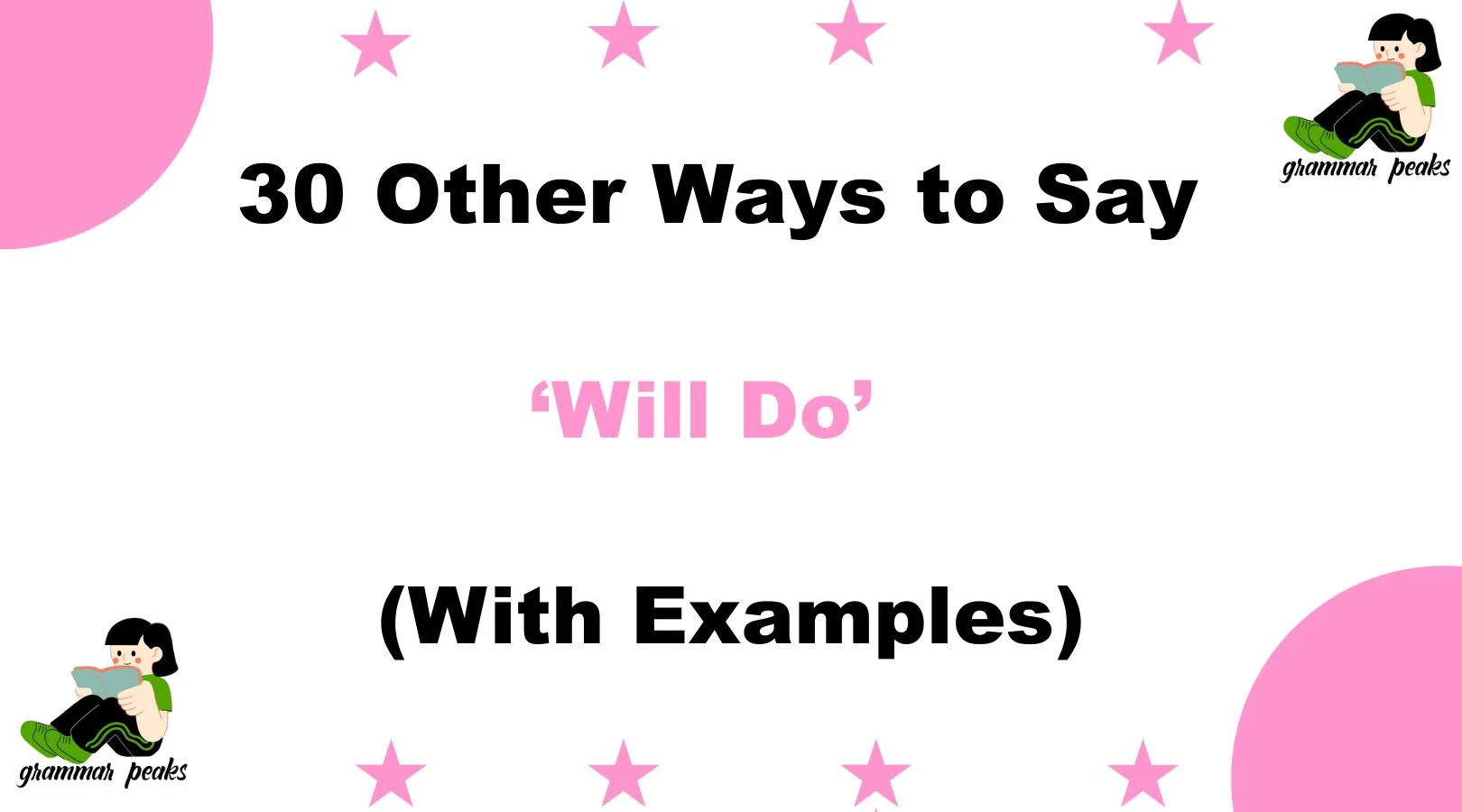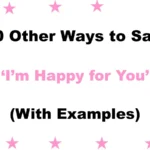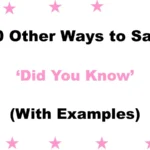Finding the right words can make all the difference in how our intentions are received. A simple “Will do” may feel quick and efficient, but sometimes it can come across as too casual or distant—especially in professional or heartfelt conversations.
Whether you’re replying to a manager, coworker, or loved one, having more personalized alternatives helps add warmth, care, and sincerity to your message. This article offers 30 thoughtful ways to say “Will do” that sound polite, professional, and meaningful—perfect for emails, meetings, or just thoughtful everyday exchanges.
What Does “Will Do” Mean?
“Will do” is a quick acknowledgement meaning “I will take care of it” or “I will complete the task.” It’s often used in emails, messages, or casual conversation to confirm you’ve received a request and will act on it. While it’s short and functional, it can sound abrupt or lack warmth depending on the context or tone.
When to Use “Will Do”
Here are the most effective situations where “Will do” fits naturally and professionally:
● Casual workplace communication
● Quick task confirmations
● Familiar professional relationships
● Non-critical requests
Is It Professional/Polite to Say “Will Do”?
Yes, but only in casual or semi-formal settings. In highly professional or client-facing communication, “Will do” can sound too clipped or dismissive. Replacing it with something more specific or warm can elevate your message and make it feel more human, cooperative, and polished.
Pros and Cons of Saying “Will Do”
Pros:
- Short and to the point
- Works well for casual team chats
- Easy to understand and widely used
Cons:
- Can sound abrupt or cold
- Not always appropriate for formal settings
- Lacks emotional tone or engagement
Synonyms for ‘Will Do’
- Absolutely
- Understood
- Certainly
- You got it
- Consider it done
- Sure thing
- I’m on it
- No problem
- Happy to
- With pleasure
- Noted
- Of course
- Already handled
- I’ll take care of it
- Affirmative
- Count on me
- Copy that
- Will handle
- No worries
- Okay, sounds good
- I’ll make sure of it
- Done
- On it now
- Taken care of
- Not a problem
- All set
- You can rely on me
- Message received
- Leave it with me
- Acknowledged
1. Absolutely
Definition: A strong confirmation or enthusiastic agreement.
Detailed Explanation: “Absolutely” expresses full commitment or certainty. It’s often used in professional conversations to confirm alignment with instructions, and adds a touch of enthusiasm or positivity.
Scenario Example: Sure, I’ll get that report updated by the end of day—absolutely.
Best Use: When you want to sound confident and energized.
Worst Use: In overly casual contexts—it may sound over-the-top.
Tone: Positive, professional, enthusiastic
2. Understood
Definition: Confirmation that the message was received and clearly comprehended.
Detailed Explanation: “Understood” is a clear, respectful way to acknowledge a task or instruction. It suits professional environments where clarity and precision matter.
Scenario Example: Understood. I’ll update the client dashboard first thing tomorrow.
Best Use: In technical or instruction-heavy communication.
Worst Use: In emotional or casual chats—it can feel robotic.
Tone: Formal, respectful, clear
3. Certainly
Definition: A polite and firm way of saying “yes” or agreeing to a request.
Detailed Explanation: “Certainly” adds elegance and assurance to your response. It’s perfect when confirming a task for someone in authority or a client.
Scenario Example: Certainly, I’ll send the documents by noon.
Best Use: In formal or respectful communication.
Worst Use: With close friends—it may sound too stiff.
Tone: Polished, formal, reassuring
4. You got it
Definition: An informal yet enthusiastic confirmation.
Detailed Explanation: “You got it” expresses readiness and friendliness, often used in casual office settings or among peers.
Scenario Example: You got it! I’ll prepare the slides for tomorrow’s meeting.
Best Use: Between coworkers or teammates.
Worst Use: In high-stakes business conversations.
Tone: Friendly, energetic, informal
5. Consider it done
Definition: Confirms the task will be completed without hesitation.
Detailed Explanation: This phrase carries confidence and speed, suggesting the task is already in motion. It reassures the other person you’re dependable.
Scenario Example: Consider it done—I’ll reach out to the vendor today.
Best Use: When emphasizing action and reliability.
Worst Use: If the task will be delayed—it might sound misleading.
Tone: Confident, action-oriented, strong
6. Sure thing
Definition: A casual yet confident way to say you agree to handle something.
Detailed Explanation: “Sure thing” is often used in friendly, relaxed environments. It’s positive, agreeable, and shows your willingness without sounding overly formal.
Scenario Example: Sure thing—I’ll email you the final draft after lunch.
Best Use: Among colleagues or close working teams.
Worst Use: In formal or legal documents—it may sound too informal.
Tone: Casual, warm, relaxed
7. I’m on it
Definition: A direct way to show that you’re already starting the task.
Detailed Explanation: This phrase shows initiative and urgency. It’s excellent when you want to give quick reassurance that something is being handled right away.
Scenario Example: I’m on it now—expect the numbers within the hour.
Best Use: In fast-paced work settings or urgent replies.
Worst Use: When you haven’t started yet—it could be misleading.
Tone: Proactive, engaged, upbeat
8. No problem
Definition: Expresses willingness to do the task without inconvenience.
Detailed Explanation: “No problem” suggests that the request is easy or not a burden. It’s a go-to response when you want to sound polite and helpful.
Scenario Example: No problem—I’ll cover the meeting notes while you’re out.
Best Use: With peers or light work conversations.
Worst Use: In serious or emotional contexts—it can feel dismissive.
Tone: Easygoing, positive, informal
9. Happy to
Definition: Shows genuine willingness to fulfill a task or request.
Detailed Explanation: Saying “Happy to” adds a cheerful tone that communicates not just agreement, but joy in helping. It’s great for warm and positive communication.
Scenario Example: Happy to send that over—I’ll attach it now.
Best Use: In thoughtful or appreciative communication.
Worst Use: For things that are clearly obligations—it might sound sarcastic.
Tone: Warm, kind, enthusiastic
10. With pleasure
Definition: Confirms your agreement in an elegant and courteous way.
Detailed Explanation: “With pleasure” is a graceful response, often used to express not just agreement but gratitude or honor in doing the task.
Scenario Example: With pleasure—I’ll schedule that meeting for you.
Best Use: In customer service or hospitality contexts.
Worst Use: With close friends—it can sound overly formal.
Tone: Polished, refined, appreciative
11. Noted
Definition: A brief acknowledgment that the instruction has been received.
Detailed Explanation: “Noted” is efficient and precise, typically used in written communication to confirm understanding without delay.
Scenario Example: Noted—I’ll make those changes to the report.
Best Use: In written replies like Slack, Teams, or email.
Worst Use: In emotional or sensitive contexts—it can sound curt.
Tone: Neutral, quick, direct
12. Of course
Definition: A polite and confident way to show agreement.
Detailed Explanation: “Of course” reflects readiness and courtesy. It works well when you want to assure someone that their request is reasonable and expected.
Scenario Example: Of course, I’ll send the materials by Friday.
Best Use: With clients or supervisors.
Worst Use: When the request is unreasonable—it might feel insincere.
Tone: Polite, positive, flexible
13. Already handled
Definition: Confirms that the task has already been completed.
Detailed Explanation: “Already handled” is a confident follow-up phrase, especially when used to reassure someone that they don’t need to worry.
Scenario Example: Already handled—I submitted the forms yesterday.
Best Use: When updating someone post-action.
Worst Use: If the task isn’t truly done—it could backfire.
Tone: Confident, efficient, proactive
14. I’ll take care of it
Definition: A promise to complete a task with care.
Detailed Explanation: This phrase is reassuring and personal, often used when someone wants to show responsibility and reliability.
Scenario Example: I’ll take care of it—don’t worry about a thing.
Best Use: In both personal and professional settings.
Worst Use: If you’re not actually able to handle it—it may cause disappointment.
Tone: Reliable, calm, thoughtful
15. Affirmative
Definition: A formal way to say “yes” or confirm action.
Detailed Explanation: “Affirmative” is often used in military or technical communication, and it sounds firm and authoritative.
Scenario Example: Affirmative—rescheduling is in progress.
Best Use: In structured or hierarchical work environments.
Worst Use: In casual or emotional discussions—it feels too cold.
Tone: Formal, clear, structured
16. Count on me
Definition: Reassures someone that they can depend on you.
Detailed Explanation: “Count on me” adds trust and sincerity to your response. It’s excellent for situations requiring dependability and support.
Scenario Example: Count on me—I’ll get everything prepared by Monday.
Best Use: In supportive or teamwork-driven contexts.
Worst Use: In brief business replies—it may be too emotional.
Tone: Supportive, genuine, loyal
17. Copy that
Definition: Confirms receipt and understanding of the message.
Detailed Explanation: Often used in radio or team comms, “Copy that” signals that you heard and understood the instruction.
Scenario Example: Copy that—I’ll follow up after the meeting.
Best Use: In technical, military, or operations teams.
Worst Use: With clients or executives—it may sound jargon-y.
Tone: Tactical, clear, directive
18. Will handle
Definition: A straightforward commitment to take action.
Detailed Explanation: “Will handle” is decisive and efficient, showing that you’ve taken responsibility without adding fluff.
Scenario Example: Will be handled by EOD—thanks for the heads-up.
Best Use: For tight tasks or timelines.
Worst Use: If tone warmth is needed—it’s a bit flat.
Tone: Efficient, clear, serious
19. No worries
Definition: A relaxed way to express willingness.
Detailed Explanation: “No worries” makes things feel light and manageable. It reassures the other person there’s no need to stress.
Scenario Example: No worries, I’ll fix the formatting right away.
Best Use: Among peers or easygoing settings.
Worst Use: When the task is major or critical.
Tone: Chill, casual, easygoing
20. Okay, sounds good
Definition: A gentle way to confirm agreement or task follow-up.
Detailed Explanation: This phrase combines agreement and comfort, especially when responding to verbal instructions or plans.
Scenario Example: Okay, sounds good—I’ll revise it accordingly.
Best Use: In meetings or everyday team conversation.
Worst Use: When a more direct commitment is expected.
Tone: Calm, agreeable, relaxed
21. I’ll make sure of it
Definition: Promises that the task will be completed thoroughly.
Detailed Explanation: This phrase conveys responsibility and attention to detail. It reassures the other party that you’re committed to seeing it through.
Scenario Example: I’ll make sure of it—the data will be triple-checked.
Best Use: In quality-focused or high-responsibility roles.
Worst Use: If you can’t guarantee the result—it may raise expectations.
Tone: Committed, trustworthy, detailed
22. Done
Definition: Indicates the task has already been completed.
Detailed Explanation: Simple and direct, “Done” is a confirmation of action, best when quick feedback is needed.
Scenario Example: Done—sent it five minutes ago.
Best Use: In real-time or fast-moving projects.
Worst Use: In formal reports—it’s too abrupt.
Tone: Sharp, quick, direct
23. On it now
Definition: Indicates you’re working on the task at this moment.
Detailed Explanation: “On it now” gives immediate reassurance, especially helpful in urgent scenarios.
Scenario Example: On it now—check your inbox in 10.
Best Use: For real-time responses and deadlines.
Worst Use: When you’re not actually working on it—it’s misleading.
Tone: Active, responsive, urgent
24. Taken care of
Definition: Confirms the task has been handled responsibly.
Detailed Explanation: “Taken care of” suggests completion and attentiveness, implying you went the extra mile.
Scenario Example: Taken care of—I spoke to the vendor already.
Best Use: When giving updates or relieving stress.
Worst Use: When the task is still pending—it may seem dishonest.
Tone: Assuring, respectful, mature
25. Not a problem
Definition: Confirms the task will be done without any issue.
Detailed Explanation: Similar to “No problem,” this version feels a bit more neutral and versatile. It’s helpful in calming communication.
Scenario Example: Not a problem—I’ll upload the file tonight.
Best Use: In stress-free task requests.
Worst Use: With superiors—it may sound too casual.
Tone: Calm, pleasant, easy
26. All set
Definition: Indicates everything is ready or completed.
Detailed Explanation: This phrase gives a final sense of readiness, great when confirming that things are good to go.
Scenario Example: All set—the presentation is loaded and waiting.
Best Use: In completion messages or last checks.
Worst Use: For complex tasks—it might oversimplify.
Tone: Final, positive, polished
27. You can rely on me
Definition: Offers trust and support with commitment.
Detailed Explanation: A warm and thoughtful phrase, it’s especially useful in building team trust or client confidence.
Scenario Example: You can rely on me to close this out smoothly.
Best Use: In relationship-driven roles of leadership.
Worst Use: For low-stakes tasks—it can sound overly dramatic.
Tone: Loyal, sincere, grounded
28. Message received
Definition: Confirms clear understanding of instructions.
Detailed Explanation: “Message received” is a technical or functional way to indicate comprehension. It’s very clear, especially in remote settings.
Scenario Example: Message received—I’ll follow the updated process.
Best Use: In operations or when clarity is key.
Worst Use: With emotional or creative requests—it’s too cold.
Tone: Functional, efficient, formal
29. Leave it with me
Definition: Offers to take the responsibility off someone’s plate.
Detailed Explanation: This phrase is friendly and dependable, showing that you’re happy to help and remove stress from the other person.
Scenario Example: Leave it with me—I’ll organize the follow-up calls.
Best Use: In supportive, team-based conversations.
Worst Use: In formal documentation—it’s too conversational.
Tone: Warm, dependable, reassuring
30. Acknowledged
Definition: Confirms receipt and understanding of information.
Detailed Explanation: “Acknowledged” is a formal and direct term, best used when confirming receipt in written communications.
Scenario Example: Acknowledged. I’ll start updating the sheet.
Best Use: In structured or regulated environments.
Worst Use: In personal or casual chats—it’s too dry.
Tone: Formal, respectful, professional
Conclusion
Saying “Will do” is quick, but using thoughtful alternatives shows more than just commitment—it expresses professionalism, warmth, and attentiveness. These 30 expressions help you respond in ways that match your tone, audience, and intent. Whether you need to sound efficient, friendly, or dependable, there’s always a better way to say “Will do”—and now, you’ve got the tools to do it.
FAQs
1. Which alternative to “Will do” works best in formal emails?
Use “Certainly”, “Understood”, or “I’ll take care of it” for a professional and respectful tone in formal email settings.
2. Can I use “Will do” with a client?
It’s safer to use a warmer or more polished phrase like “Happy to” or “Of course” with clients, to maintain professionalism.
3. What’s the most confident alternative?
“Consider it done” and “Already handled” show high confidence and initiative.
4. Are these alternatives okay for texting and chat apps?
Yes! Options like “You got it”, “On it now”, and “Sure thing” are perfect for informal team chats or messaging.
5. Should I avoid “Will do” completely?
Not necessarily—it’s fine for quick, casual replies. But having better options helps you adapt your communication style more thoughtfully.

Mia Rose is a passionate Language Coach and Contributor at GrammarPeaks, where she specializes in practical grammar tips and language learning strategies. With a strong foundation in education and communication, Mia brings a friendly, approachable style to her writing. Her goal is to make complex grammar rules simple and usable for learners at any level, helping them grow in both confidence and fluency.





